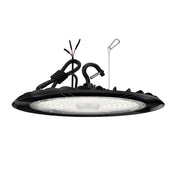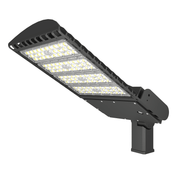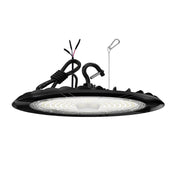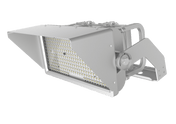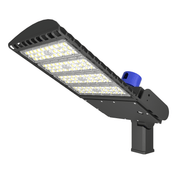What is light uniformity?
Lighting is required wherever we go, especially indoors and during the night. To ensure proper lighting in a space, uniformity is vital. It helps improve user perception and allows one to see the entire premises. Without uniform lighting, people would easily fall or accidents would occur. It is for this reason that the government has made it mandatory for companies to provide adequate light uniformity in the workspace. However, light uniformity is required everywhere such as at the football court, gym, stadium, parking lot, and so on. If you want to learn more about light uniformity, you have come to the right place. This guide shares all the information that you need. So, what are you waiting for? Let’s start with the guide.
Illumination uniformity refers to the minimum illuminance on the surface and the average illuminance ratio, which is calculated as illuminance uniformity = minimum illuminance value / average illuminance value.
For example, by national standards, school classroom lighting desktop average illuminance should not be less than 300lx, if the illuminance uniformity should not be less than 0.7, then according to the formula for calculating illuminance uniformity, the minimum illuminance should not be less than 210lx (300lx × 0.7 = 210lx).
Here are a few things to focus on. First, uniformity of illumination refers to the ratio of the minimum illumination to the average illumination, not the ratio of the maximum illumination or the ratio of other illumination. Second, in the context of classroom lighting, uniformity of illumination refers to the ratio of the minimum illuminance to the average illuminance on the desk, not the ratio of the illuminance to the average illuminance at other points in the classroom.
Definition of light uniformity
The definition of light uniformity clearly states that the illumination of an area is produced by light. When talking about light uniformity, the minimum illuminance ratio is usually mentioned. Whether direct or indirect lighting is used, the lighting needs to be sufficiently uniform throughout the task area.
Light uniformity
The light uniformity factor is the intensity of light in a given area. According to EN 12464-1, office lighting should average at least 500 lux for smooth reading, typing, writing, and data processing. The coefficient applies regardless of the condition or size of the structure in question. Our perception of the world around us is influenced by lighting. Lighting uniformity is therefore crucial for navigation, for example. If it is interrupted by a drop in illumination, it prevents us from fully perceiving the space. The type of lighting affects uniformity and its location. Most tasks requiring concentration require a uniformity index of about 0.6, while technical drawing and other demanding tasks require a ratio of at least 0.7.
Illumination uniformity Formula
To measure illumination uniformity, the following formula is required.
U1 = E(minimum)/E(average) U2 = E(minimum)/E(maximum)
U stands for uniformity, and E stands for illuminance, respectively. As can be seen from the above formula, illumination uniformity is the ratio of illuminance or lux level. This Lighting Uniformity Ratio is important because it lets you determine how evenly the light distributes light to a given area. If the difference between average and minimum illuminance is not high, the ratio will be high. The uniformity is high. According to the standard, the minimum illuminance needs to correspond to the recommended illuminance level. According to the BS EN 13201-2:2015 standard, the general road lighting scheme sets the uniformity level to 0.4 and 0.6.
illumination uniformity Standard
Depending on the traffic flow on the road, different light uniformity standards need to be followed. For example, if we take road lighting as an example, the following criteria must be followed. Please refer to the following different road lighting standards:
Table 1 — M lighting classes
| Class | The luminance of the road surface of the carriageway for the dry and wet road surface condition |
Disability glare |
Lighting of surroundings |
|||
| Dry conditions | Wet | Dry conditions |
Dry conditions |
|||
| L [minimum maintained] cd·m2 |
Uo [minimum] |
Ul a [minimum] |
Uowb [minimum] |
fTIc [maximum] % |
Reid [minimum] |
|
| M1 | 2,00 | 0,40 | 0,70 | 0,15 | 10 | 0,35 |
| M2 | 1,50 | 0,40 | 0,70 | 0,15 | 10 | 0,35 |
| M3 | 1,00 | 0,40 | 0,60 | 0,15 | 15 | 0,30 |
| M4 | 0,75 | 0,40 | 0,60 | 0,15 | 15 | 0,30 |
| M5 | 0,50 | 0,35 | 0,40 | 0,15 | 15 | 0,30 |
| M6 | 0,30 | 0,35 | 0,40 | 0,15 | 20 | 0,30 |
Table 2 — C lighting classes based on road surface illuminance
| Class | Horizontal illuminance | |
| Ē [minimum maintained]lx | Uo [minimum] | |
| C0 | 50 | 0,40 |
| C1 | 30 | 0,40 |
| C2 | 20,0 | 0,40 |
| C3 | 15,0 | 0,40 |
| C4 | 10,0 | 0,40 |
| C5 | 7,50 | 0,40 |
Table 3 — P lighting classes
| Class | Horizontal illuminance | An additional requirement if facial recognition is necessary |
||
| Ē a [minimum maintained] lx |
Emin [maintained] lx |
Ev,min [maintained] lx |
Esc,min [maintained] lx |
|
| P1 | 15,0 | 3,00 | 5,0 | 5,0 |
| P2 | 10,0 | 2,00 | 3,0 | 2,0 |
| P3 | 7,50 | 1,50 | 2,5 | 1,5 |
| P4 | 5,00 | 1,00 | 1,5 | 1,0 |
| P5 | 3,00 | 0,60 | 1,0 | 0,6 |
| P6 | 2,00 | 0,40 | 0,6 | 0,2 |
| P7 | performance not determined |
performance not determined |
||
| To provide for uniformity, the actual value of the maintained average illuminance shall not exceed 1,5 times the minimum Ē value indicated for the class. | ||||
Table 4 — HS lighting classes
| Class | Hemispherical illuminance | |
| Ēhs[minimum maintained] lx | Uo [minimum] | |
| HS1 | 5,00 | 0,15 |
| HS2 | 2,50 | 0,15 |
| HS3 | 1,00 | 0,15 |
| HS4 | performance not determined | performance not determined |
There is no harm in increasing the lighting uniformity, as it helps improve the driver's vision. However, the more complex the lighting system, the higher the lighting cost. So, if you want to increase uniform lighting, you need to bear the cost. The best way to save money is to buy LED Street lights from Hylele.
There is no harm in adding high uniformity lighting as it helps to improve the vision of road users and night workers. However, the more complex the lighting system, the higher the cost of lighting. Therefore, if you want to increase the uniformity of your lighting, the best way to save money is to buy LED lamps from Hylele. The best way to save money is to buy LED lights from Hylele.


